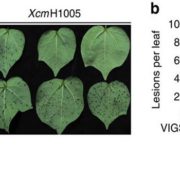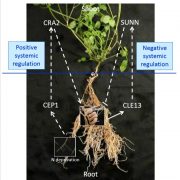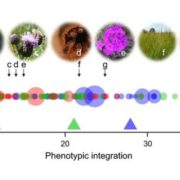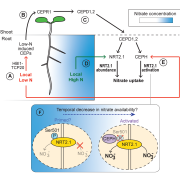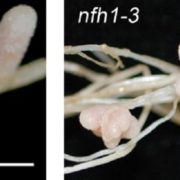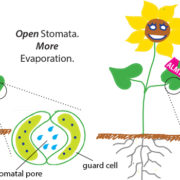Special delivery: An independent secretion pathway for the delivery of cytoplasmic pathogen effectors
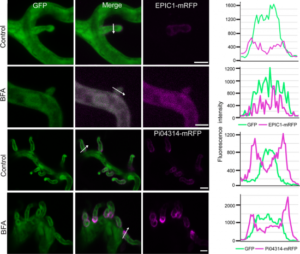 Pathogenic microbes manipulate host plants by secreting effector molecules that interfere with immunity. Bacterial phytopathogens achieve this using specialized secretion apparatuses that act as molecular ‘hypodermic needles’ to inject effector proteins directly into plant cells. In comparison, effector delivery in filamentous oomycete and fungal pathogens is less clear. Many filamentous pathogens develop specialized biotrophic structures like haustoria, which invaginate plant cells to deliver apoplastic and cytoplasmic effector molecules. In a recent study, Wang et al. examined microbial secretion pathways involved in the delivery of apoplastic and cytoplasmic effectors in the late blight pathogen Phytophthora infestans. By combining pharmacological treatments (brefeldin A) with live-cell imaging of pathogen effector proteins using fluorescent reporter strains, the authors demonstrate that apoplastic effectors are delivered by conventional secretion pathways whereas cytoplasmic effectors utilize an independent, BFA-insensitive route. These findings begin to tease apart the intricate processes involved in the delivery of effectors at the haustoria of filamentous pathogens. (Summary by Philip Carella) New Phytol. 10.1111/nph.14696/full
Pathogenic microbes manipulate host plants by secreting effector molecules that interfere with immunity. Bacterial phytopathogens achieve this using specialized secretion apparatuses that act as molecular ‘hypodermic needles’ to inject effector proteins directly into plant cells. In comparison, effector delivery in filamentous oomycete and fungal pathogens is less clear. Many filamentous pathogens develop specialized biotrophic structures like haustoria, which invaginate plant cells to deliver apoplastic and cytoplasmic effector molecules. In a recent study, Wang et al. examined microbial secretion pathways involved in the delivery of apoplastic and cytoplasmic effectors in the late blight pathogen Phytophthora infestans. By combining pharmacological treatments (brefeldin A) with live-cell imaging of pathogen effector proteins using fluorescent reporter strains, the authors demonstrate that apoplastic effectors are delivered by conventional secretion pathways whereas cytoplasmic effectors utilize an independent, BFA-insensitive route. These findings begin to tease apart the intricate processes involved in the delivery of effectors at the haustoria of filamentous pathogens. (Summary by Philip Carella) New Phytol. 10.1111/nph.14696/full


